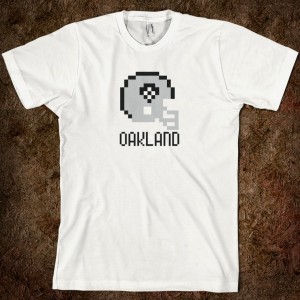EA Sports’ newest installment of their soccer video game, FIFA 16, will be coming out on September 22, 15. When it does, it will feature women’s soccer players for the first time ever. This is an exciting development for fans of gender equality AND fans of the U.S. women’s soccer team. One of the most hotly anticipated aspects of the release of any new sports video game is the rating of players. Fans (and even players) obsess over player ratings. Is Player A too high? How could they possibly have made Player B only a 75 (all the ratings are out of 100)? For the first time ever, we get to obsess over the ratings of our favorite female soccer players as well as male. On Twitter today, I saw the first leak of the overall ratings of the players from the U.S. Women’s soccer team from Women’s Football Comp. Here they are, in order, with my comments. If you want to know more about any of the players, I’ve linked to the profiles of them that I wrote before the World Cup.
- Abby Wambach – 88: Okay, this is clearly an honorary legacy rating for the greatest international soccer goal scorer of all time. At 35, she’s no longer the best striker in the world, not even on her own national team. She came in off the bench in the last few World Cup games and that’s one of the reasons the team won the Cup. After all she’s done for the country and sport, I’m okay with this. Wambach forever!
- Megan Rapinoe – 87: This is an interesting rating and perhaps shows what strengths the FIFA game weighs more heavily than others. The U.S. vs. Germany semifinal notwithstanding, Rapinoe is normally a player who emphasizes technical skill over speed and strength. She’s can strike a set piece with the best of them and hit streaking attackers in stride with her accurate passing. The best non-Wambach player though? I’m not sure.
- Hope Solo – 87: Now we’re cooking with gas. Solo is still the best goalkeeper in the world. An intimidating presence in the net, Solo has earned every one of those 87 rating points.
- Carli Lloyd – 86: The hero of the World Cup for the USA, Lloyd’s strengths translate well to video gaming. She’s a physical beast, strong and durable, and if her long-range shooting rating is not 100, something is very, very wrong at EA Sports headquarters.
- Becky Sauerbrunn – 84: I could not be more happy with this rating. The back-four for the USA were my favorite part of the World Cup and, although she didn’t get as much acclaim as some of her defensive teammates, Sauerbrunn was the solid foundation that made it all happen. She’s totally dependable, which is exactly what you want out of a defender.
- Alex Morgan – 84: Yeah, well, okay, fine. I’m not a big fan of Morgan, either on the field or off, but she does have some very easily replicable skills. She’s very fast and extremely clever at making threatening runs through the defense. Her finishing touch leaves something to be desired, but at 84, I think that’s probably represented in her rating. She does everything else very well.
- Tobin Heath – 83: This overall rating is surely bolstered by the fact that Heath has the dribbling skills of an alien whose entire evolution has been devoted to soccer dribbling. She’s a freak.
- Christie Rampone – 83: Another honorary rating and another acceptable one based on her overall career arc. The only woman who was on the team that won the 1999 and 2015 World Cups deserves everything she gets. Just get her out of your lineup if you play as the United States in the game. Don’t break up the true back four for Rampone’s honorary strength.
- Sydney Leroux – 82: Leroux had trouble breaking into the U.S. lineup at the World Cup, but this rating rings true nonetheless. She’s virtually interchangeable with Alex Morgan, just ever so slightly worse. It’s why it’s hard for her to get playing time in real life and in video games.
- Lauren Holiday – 81: If I had my druthers, I’d push Holiday’s rating a little bit farther up, but her true strength, vision, is virtually impossible to capture in a video game.
- Julie Johnston – 81: If Johnston had been able to continue her scoring streak from the Algarve Cup into the World Cup, she’d be one of the top five players in the game. As is, this rating probably reflects that we should expect a little bit of regression to the mean in her play. She had a sublime streak of about fifteen games but there are cracks in her armor, which we saw against Germany and Japan.
- Heather O’Reilly – 81: I guess? For her have played only nine minutes in the World Cup and to be higher than several players who played key roles seems strange to me.
- Kelley O’Hara – 81: The proverbial spark plug off the bench for the U.S. in the World Cup, O’Hara looked every bit as good as her rating suggests. I might even push her up past Leroux and Heath, but at this point we’re quibbling over a few rating points.
- Ashlyn Harris – 80: Being stuck behind Hope Solo is no shame. The second best goalie on the U.S. team may also be the second best goalie in the world.
- Ali Krieger – 80: I’m surprised to see a core member of the U.S. defense so far down the list, especially one whose public profile is as high as Krieger’s.
- Whitney Engen – 79: Engen could have, might have, would have been the starting central defender if an injury had not given Johnston a chance to seize the day (and the position.) Engen is a solid player but given her lack of playing time in the World Cup, I’m surprised she was not at the bottom of the list.
- Morgan Brian – 74: Here’s where things start getting crazy. Brian was a key piece, some would argue THE KEY PIECE, that, once inserted into the lineup, made the U.S. team’s run to the World Cup championship possible. Even playing slightly out of position at defensive midfield, Brian was a rock. At 22, she’s also has one of the brightest future’s in the game, something that, in many game modes, players should actually get to experience. I hope that the programmers at least put that in. If you play more than a year or two into the future, Brian should be the top rated U.S. player seven times out of 10.
- Amy Rodriguez – 74: Oh, fine. I think Rodriguez gets a raw deal, but she’s used to it. There’s no way she’s ten rating points worse than Alex Morgan.
- Christen Press – 72: This is just stupid. Anyone who can do this to the French defense should be rated much higher. The awkwardness of her fit with Lloyd and Rapinoe in the midfield held her back from World Cup stardom and now it’s being reflected in this rating. That’s a shame!
Missing – A few players were not included in @jigsawwill’s Twitter posts. Here is my best guess at what their rating might be and why.
- Alyssa Naeher – 80: As a Boston Breakers fan, I get to sit right behind Naeher and watch her work on a regular basis. She is an extraordinary keeper. I’m putting her even with Hope Solo’s other backup, Ashlyn Harris, who I haven’t seen play as much, but who I assume must be equally good.
- Meghan Klingenberg – 82: Ahead of Julie Johnston and Ali Krieger? Yes — Klingenberg’s ridiculous speed bumps her above those players and will maker her a particular joy to play as in the video game. Speed kills in video games, just ask fans of Michael Vick and Bo Jackson.
- Shannon Boxx – 72: At 38, Shannon Boxx’ time as a world class holding midfielder has come and gone. Unlike Rampone and Wambach, Boxx doesn’t have a high enough profile to get one of those charming honorary rating boosts.
- Lori Chalupney – 74: Versatility is another quality that’s hard for video games to represent. Without Chalupney’s ability to play every position on the field (except, I assume, goalie) I’m not sure she would have been included on the team. Being a Swiss Army Knife is valuable, but not when quantifying the skills required to play each position.







